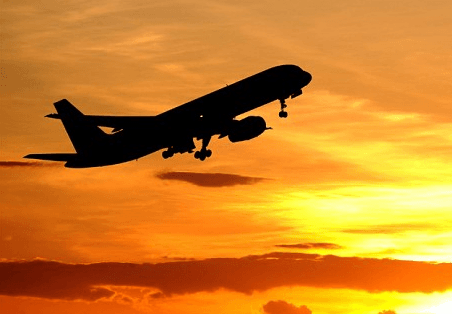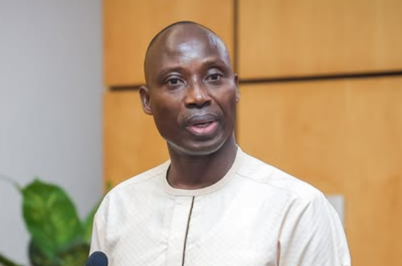
London — The road to Sub-Saharan Africa's DTT transition has never been straight but against all the odds Ghana is nearing completion. The transition has been completed by a Ghanaian company at considerably less than the original tenderer quoted. Russell Southwood spoke to Richard Hlomador, CEO, KNET about carrying out the transition and his future plans.
In 2015 KNET got a contract from the Ghanaian Government to build a DVBT2 digital TV platform for Ghana. It was a Build-Operate-Transfer contract and that contract is almost over. It ends in Q1, 2020 and after that point the Government will then operate the platform.
It currently covers over 92% of people in Ghana. The original plan was to use DTH satellite to cover the remaining 8% of the people:"The majority of people used our DTH platform so there would be no gap. Those people within range would receive a TV signal. We are asking the Government to buy six satellite channels as a back-up. This was our proposal to the previous Government".
The first successful bidder, Chinese pay TV operator StarTimes had a contract with the Government and proposed to roll out the DTT platform for US$119 million on the basis of a loan from China's Exim Bank. It didn't carry out the contract and missed the deadline. The contract was re-tendered and KNET won it against 19 international competitors.
"Each of the tenderers was asked to present financial proposals. All of them came with interest (needing to be paid) proposals. We said we would help the Government sell the spectrum one year in advance and use the money raised that way to finance the migration. The Government initiated the spectrum sale process and sold it to MTN. It cost us US$82 million to roll-out the platform and we did it over four years".
In other words, KNET built the platform for under half the price proposed by StarTimes, the key difference between the two proposals being that KNET's did not include provision for pay for channels.
StarTimes took the Government to Court for not honoring the original contract and the issue was that China's Exim Bank would not pay out the loan because the contract was awarded to a Ghanaian company.
The current platform has 42 SD channels and 2 HD channels. With the regionalization needed, 42 channels are being used but in the future that will depend on the configuration. All these channels are currently occupied and there are no pay for channels.
How many set-top boxes have been rolled out?:"A good 50% are on the market. The system for monitoring them has been installed but not yet activated. The Government will let us know when to activate it. The Government is also looking for money to enhance the platform for pay TV".
So what's the state of Ghana's broadcast industry?:"I focus on the tech side so I can't tell you in detail. There are job cuts across all industries in Ghana, including the TV industry. There are so many Free-To-Air channels that rely on advertising from other industries and they are not doing well. But I focus on providing a reliable TV transmission service myself".
KNET is building on its completion of the DTT Process in Ghana to do roll-outs in other countries:"We've got proposals out in Togo, Sierra Leone and Liberia. We currently have a "proof of concept" running in Togo on DTH and we can build DTT as we go. It's DVBT2 and there are 8 more channels to come. We're uplifting it through Astra 2B and it's on a 90 day evaluation period. Not every country can build DTT or do a pre-sale of spectrum. Most mobile operators want spectrum when they pay for it. You can migrate to a DTH platform and build DTT as you go along".
"Ten years ago we were active in the ISP niche space. We went into broadcasting as it seemed to be where the next generation of business would be. The agenda now is to build an OTT platform and take that relationship to the next level. We cover 22 countries with our satellite coverage and we want to develop 5G platforms to deliver content and use these platforms for content access".
For the OTT platform, it's talking to 2-3 different operators and Telebreeze looks the "most interesting". It can offer 100 channels that the diaspora will use to view TV programmes on a plane, a laptop, a tablet or smart TV. It has licence agreements with all the operators on the platform and it's putting advertising on the platform. It also has middleware for the payment of bills.
"The server will sit in our data centre in Ghana and also be mirrored in the UK. An uplink will take place to our servers then be mirrored once the content has been received".
"We also own the West African Platform Services (WAPS) who are developing a hybrid Free-To-Air and pay for platform that will offer channels like CNN, BBC, etc. It will be an a la carte pay platform where you pay by channel which is something new in the market. It will be using the SES Astra 2F satellite."
I sent off to the proofreader last week a 146 pp report called Sub-Saharan Africa's Digital Landscape and its Top 11 Markets - data prices, smartphones, digital content and services and e-commerce. After four year's research. it's my analysis of how big Sub-Saharan Africa's online activity really is; who's actually paying for anything; how they're paying for it; and what they're doing in terms of online behavior (both content and services). It has over a thousand data points in it, many from completely new sources. I think you and your colleagues will find it very interesting and useful. The publication date is set for 2 April and the pre-publication price is GBP1115.
If you're interested in seeing Contents Page and a full listing of all tables and graphics just mail me send me an email requesting it. To take advantage of the pre-publication offer, just send me an email requesting an invoice: [email protected]
Read Full Story




















Facebook
Twitter
Pinterest
Instagram
Google+
YouTube
LinkedIn
RSS